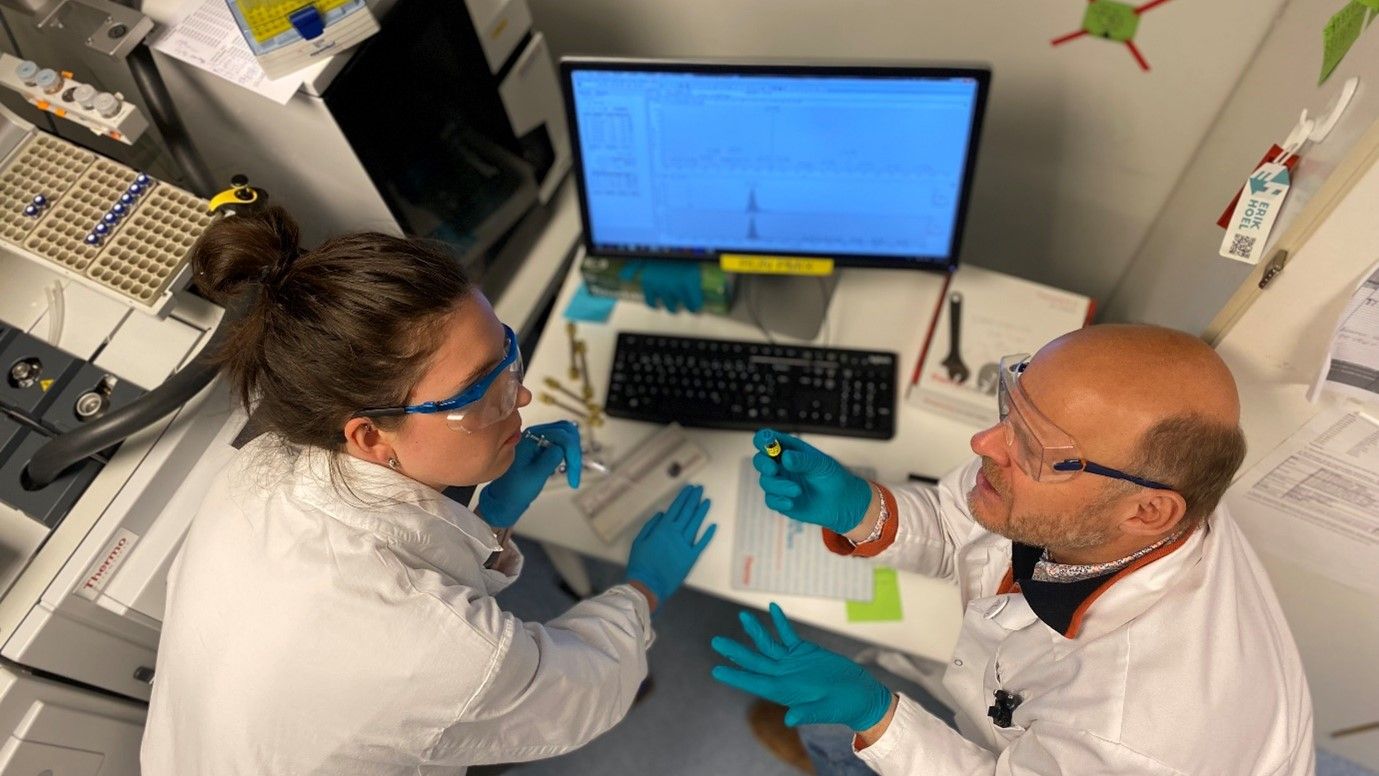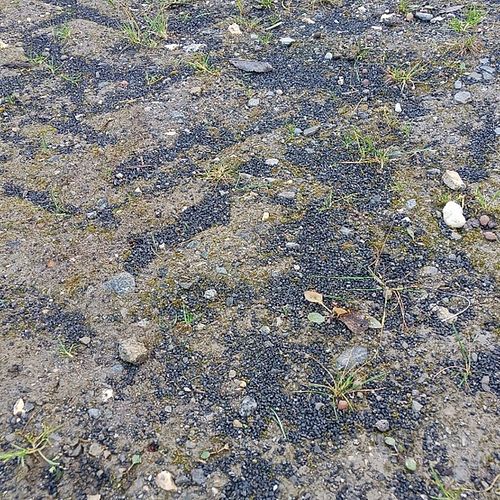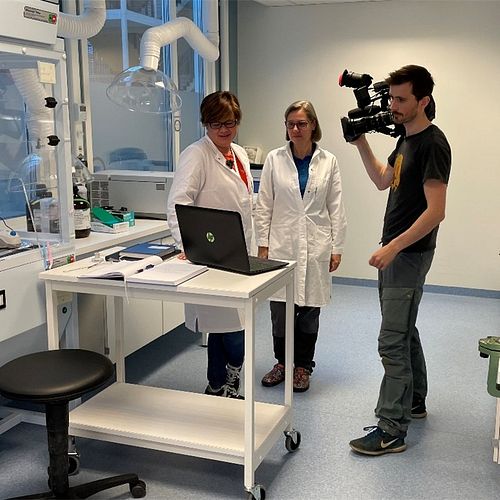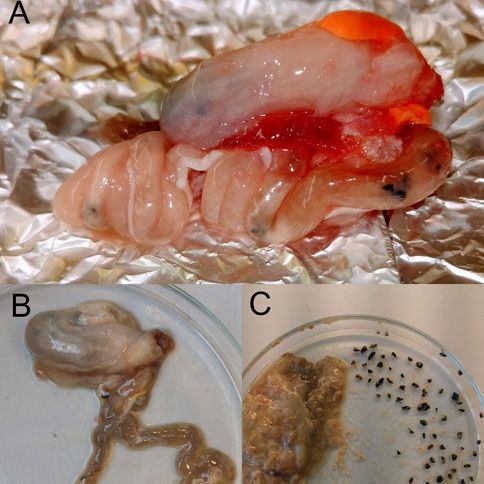13. oktober 2023 nyhet
Crumb rubber made from end of life car tyres is a common waste product in urban societies and a nuisance for the parents of football players, whose children bring the particles home in their sports clothing and shoes. It can also end up in seas and oceans. What happens if marine animals mistake crumb rubber for food?
By Claudia Halsband (Akvaplan-niva), Fanny Hägg (Akvaplan-niva/NILU), Dorte Herzke, Vladimir Nikiforov (NILU), Andy Booth, Mari E. Creese, and Lisbet Sørensen (SINTEF Ocean).
More than 1.5 billion vehicles drive on the roads around our planet, and the global car tyre market has produced over 2 billion tyres in 2019 alone, with an expected increase of 3% over the next 5 years. While driving, tyres emit tiny rubber particles through abrasion in contact with the road surface, so-called tyre wear particles (TWPs), until they must be replaced with new tyres. The discarded end-of-life tyres cannot be deposited in landfills, as they contain a complex mixture of chemicals, and instead are often downcycled to crumb rubber, which is widely used in artificial surfaces, such as playgrounds and sport fields, owing to its low price and elastic properties. But what happens when TWPs or crumb rubber go astray in the environment and reach coastal marine systems? Will marine animals mistake car tyre particles for food and be exposed to toxins?
Crumb rubber (CR) is produced from old vehicle tyres and contains many chemical additives and residual production chemicals. Demands for cheap infill materials have increased the use of crumb rubber in artificial surfaces such as playgrounds and football fields. Applied in the form of loose granulate, CR is easily lost to the surrounding environment. An average size football field covered with artificial turf contains between 60 and 100 tonnes of CR. These fields need to be regularly re-filled with several tonnes of CR due to continuous losses through attachment to clothing and shoes, cleaning and maintenance practices, snow clearing, as well as wind and water runoff from the pitches. Removed snow is sometimes dumped into the ocean, potentially a direct pathway for crumb rubber to the marine environment. Tyre-derived particles and several chemicals they contain are harmful to various aquatic organisms, it is therefore important to evaluate the exposure of marine organisms to crumb rubber and understand the associated risks to animal health.
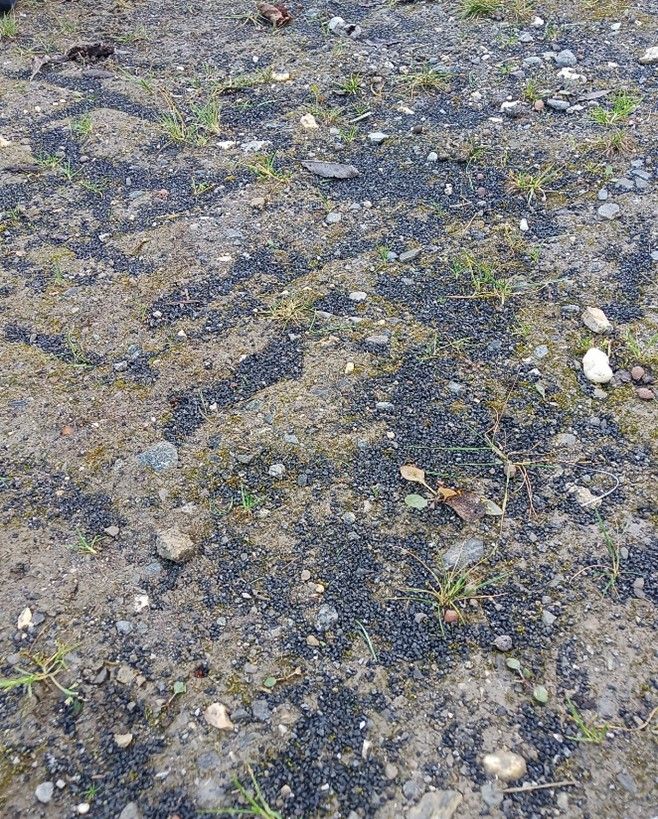
Crumb rubber escapes from the turf through snow removal and rain/meltwater runoff. Particles can be transported by streams and municipal drainage systems, ultimately reaching the marine environment. Photo: Fanny Hägg / Akvaplan-niva
A recent study, published in the journal Frontiers in Environmental Science, investigated the responses of the marine lumpfish (Cyclopterus lumpus) to crumb rubber exposure in a controlled feeding experiment. Juvenile fish were offered crumb rubber particles with their feed for 1 week, followed by 2 weeks of depuration.
The results showed that most of the exposed lumpfish ingested crumb rubber. Crumb rubber was found in fish intestines from the first day of the experiment, showing that the lumpfish did not avoid the rubber and thus did not discriminate against non-edible particles. CR particle ingestion occurred in >75% of exposed individuals, with a maximum of 84 particles observed in one specimen. A continuous increase in the number of rubber particles found in fish guts indicated that the ingestion was more rapid than the excretion, illustrated by a peak on day 8, the day following the one-week exposure period. Gastrointestinal tract retention times varied, with some organisms having no CR particles and others still containing up to 33 CR particles at the end of the experiment. Individual differences in behaviour may have led to the high variation in the number of CR particles recorded at different time points: while some fish accumulated rubber particles over time, others seem to have evacuated the rubber in their faeces, while yet others may have rejected the rubber as food altogether.
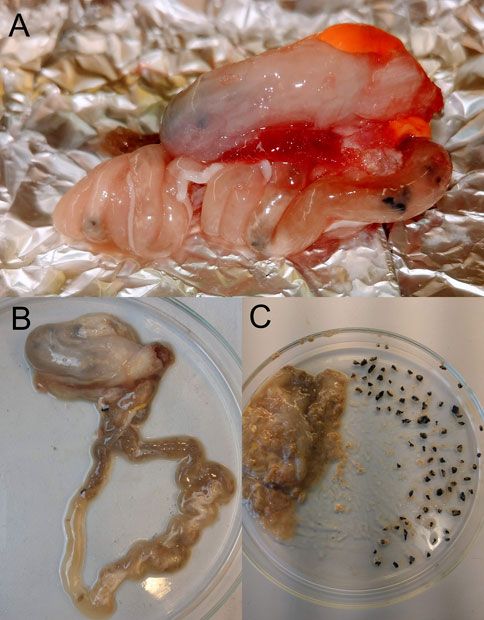
Gastrointestinal tract (GI-tract) of an exposed lumpfish. (A) Stomach, gut, and liver, (B) gut extended, and (C) opened with CR dissected. Photo: Fanny Hägg / Akvaplan-niva
Blood samples were analyzed for metals and organic chemicals. While no uptake of metals into the fish blood was found, the team was especially interested in a compound called 6PPD (N-(1,3-dimethylbutyl)-N′-phenyl-p-phenylenediamine), a chemical antioxidant used in tyre manufacturing that transforms into a derivative known as 6PPD-quinone in the environment. The latter has been shown to be lethally toxic to coho salmon (Oncorhynchus kisutch) and hence, addressing concerns about the potential toxicity of 6PPD and 6PPD-quinone to other aquatic organisms was one of the goals of the study. High resolution GC-MS analysis indicated that not only 6PPD, but several phenylenediamines (PDs) were taken up into the blood of the fish. Three of the PDs found in blood were the same as those identified in the additive mixture Vulkanox3100, a common car tyre ingredient. N-(1,3-dimethylbutyl)-N′-phenyl-p-phenylenediamine (6PPD) was the most concentrated PD in both the crumb rubber and lumpfish blood. Interestingly, the uptake of PDs into blood was proportionate to the number of ingested CR particles over time. The concentrations of the detected chemicals were highest right after the exposure on day 7 but decreased during the cleansing period until the experiment ended on day 21. This indicates that these chemicals do not accumulate in blood and are metabolised, transformed or transferred to other organs quite quickly. The transformation product 6PPD-quinone was detected in the rubber material, but not in the blood.
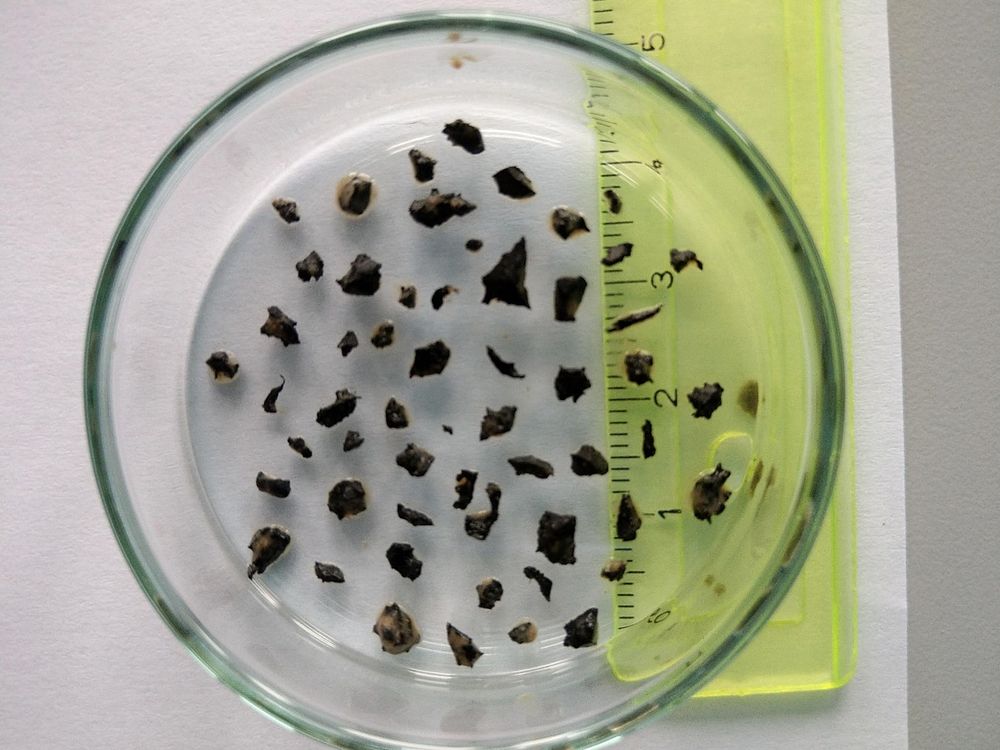
Crumb rubber collected from the gastrointestinal tract of a single lumpfish. These 54 particles illustrate the wide variation of shape and size. Photo: Fanny Hägg / Akvaplan-niva
This study demonstrates that the ingestion of particles is an important pathway in the uptake of chemical additives from anthropogenic sources by aquatic organisms. Organisms that are opportunistic or non-selective in their feeding behaviour are at increased risk of exposure to chemical additives. PDs are specific and bioavailable chemicals in car tyre rubber that have the potential to serve as biomarkers of recent exposure to tire chemicals, where simple blood samples could be used to assess recent tire chemical exposure in vertebrates, including humans. More research is needed to elucidate the toxicity of these substances and possible negative effects on the health and fitness of exposed animals.
****
The lumpfish:

The lumpfish (Cyclopterus lumpus). Photo: Erling Svensen.
The lumpfish (Cyclopterus lumpus) is a semi-pelagic cold-water fish found in northern and Arctic oceans. Lumpfish reside in both coastal and open waters and they use their suction disc to attach to substrates. They spawn in rocky coastal regions where the female lays eggs on stones. Male lumpfish stay behind and nurse and guard the developing eggs. They are described as opportunistic feeders, foraging on what is available. Lumpfish is a commercially important species in the aquaculture industry, where they are used as cleaner fish, as they eat parasitic salmon lice. Lumpfish roe is also valued in food markets.
The project:
The project “Sublethal toxicity effects of car tyre rubber on lumpsucker and shrimps” (RubberTox) was funded by the Fram Centre flagship Contaminants. This project was led by Dr Claudia Halsband from Akvaplan-niva Tromsø in collaboration with Drs Dorte Herzke and Vladimir Nikiforov from NILU Tromsø and Drs Andy M Booth, Lisbet Sørensen, and Mari Engenes Creese from SINTEF Ocean in Trondheim, with support from the staff at the Akvaplan-niva R&D station FISK. The RubberTox project supported Fanny Hägg’s master dissertation under the supervision of all project participants and Sophie Bourgeon (UiT). For outreach purposes, the lumpfish feeding study was featured in a German TV documentary about more sustainability in European soccer (planet e, ZDF, Germany).

Production of the documentary “planet e – sustainable soccer” for German television. Dorte Herzke - NILU and Claudia Halsband - Akvaplan-niva
This is a revised version of a text that has previously been published in the Fram Centre journal "Fram Forum": https://framforum.com/2023/03/...
Link to scientific publication in the journal Frontiers in Environmental Science: https://www.frontiersin.org/articles/10.3389/fenvs.2023.1219248/full
